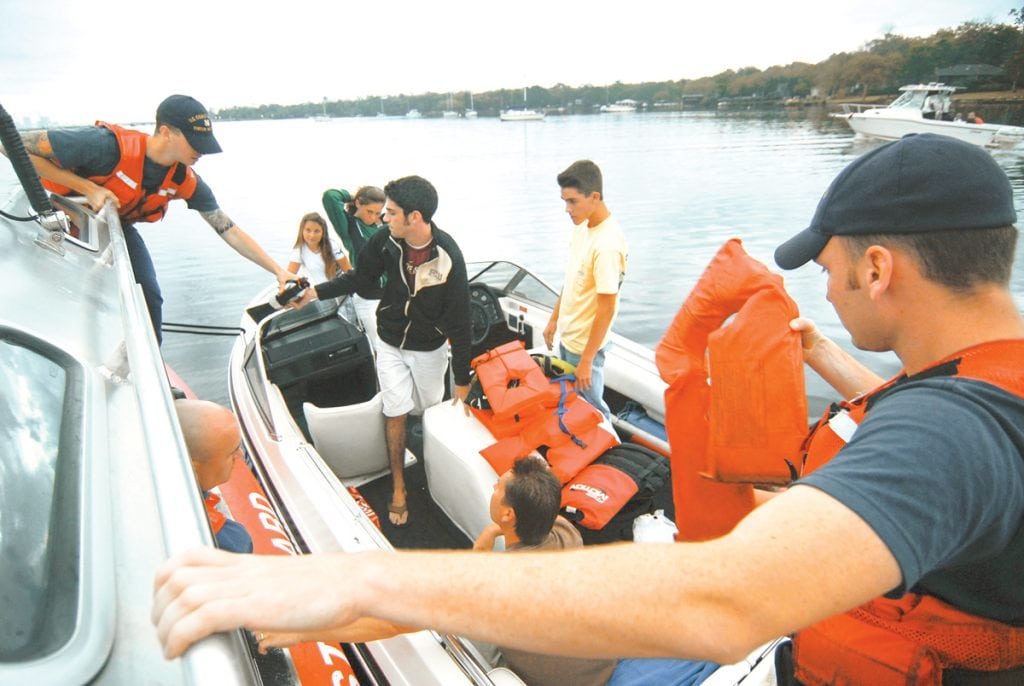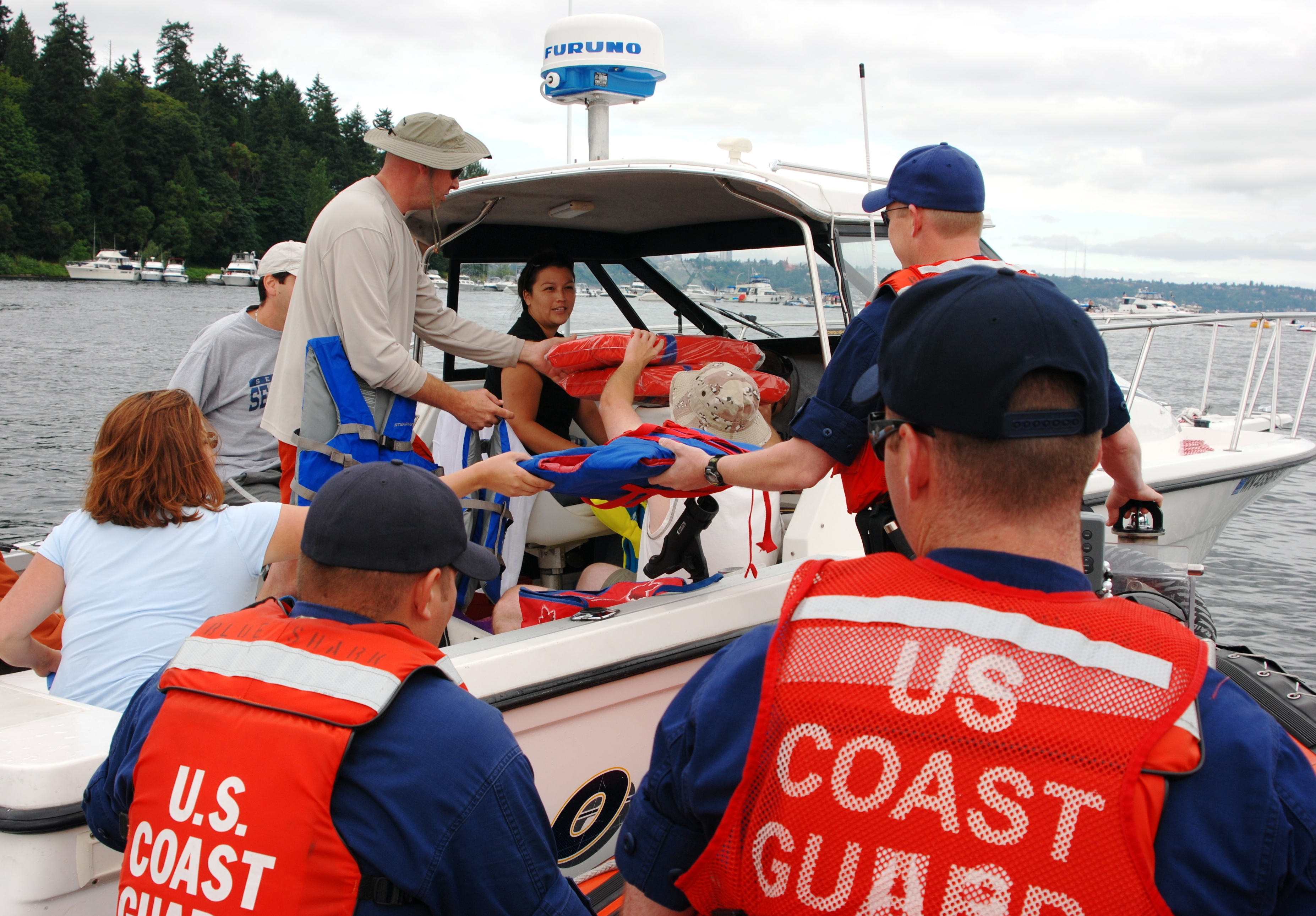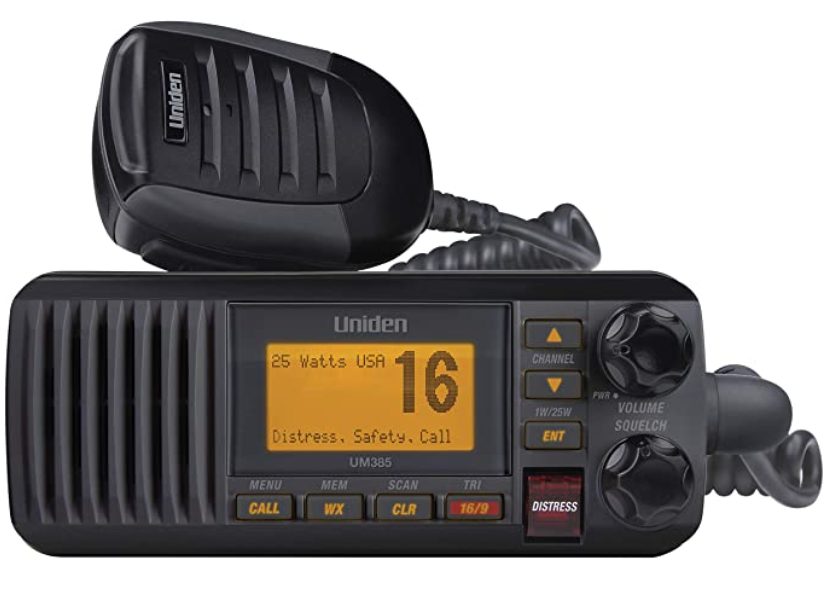Be Prepared When the Coast Guard Boards
The U.S. Coast Guard isn’t to be feared like Big Brother, though boat operators may feel like scofflaws who speed through school zones when the red and blueclad Coasties appear. It’s the same driver angst police officers elicit on the road: What will I get busted for now?
Respect Goes Both Ways
Anyone regularly navigating ports or waters near international borders will likely have an encounter with the Coast Guard. As one of the five branches of the U.S. military— along with the Air Force, Army, Marine Corps, and Navy—the Coast Guard is under the Department of Homeland Security and exists to enforce the law, not to teach it. In addition, when you launch your boat in U.S. waters, you relinquish your Fourth Amendment rights at the dock. The Coast Guard doesn’t require probable cause to board your boat, a provision which dates back to the late 1700s and the Revolutionary War.
“When the Coast Guard pulls up to a boat, often it’s [to say]: ‘Hey, we are just checking to see how you are doing today,’” says Jonathan Lally, a Coast Guard spokesman and Petty Officer 2nd Class, based out of the 7th Coast Guard District, Miami Public Affairs Office. “Our crews are not out there to hassle people. They are out there to make sure people are safe and prevent accidents before they happen.”
Making the Coast Guard’s job difficult when officers want to board your boat will only cause the stop to last longer and may increase suspicion. If you have a firearm or other weapons on board, let the Coast Guard officers know before they board. Once they do an initial safety sweep to their satisfaction and make sure your registration and identification check out, then they may look for drugs. If that happens, they will thoroughly search compartments and closets.
Be Prepared
Heeding basic regulations will prevent a citation. The Coast Guard will ensure that all children younger than age 13 are wearing life jackets and that there is a flotation device for each person on board. Make sure you have a noisemaker and throw-ring with a line that is within easy reach. A lack of boat registration or fire extinguisher is a common error, as these are federal requirements. Again, the Coast Guard’s main duties are certifying that boats are secure from foreign threats, environmentally in compliance and, most important, that the boat and passengers are safe.
“Already having on a life jacket when you go into the water is going to increase your chances of survival,” Lally explains. “Not only does it help you float, but it gives us and other rescuers more to search for, because we are looking for basketball-size object in the water. Today’s life jackets are more comfortable than old-style life jackets, as well as colorful.”
Once the inspection is complete, the Coast Guard will issue a Report of Boarding Form CG-4100, a two-page document that consists of a white original and a yellow copy. The captain gets the yellow copy. Keep it handy, as you can show it to Coast Guard officers if you are boarded again soon.
U.S. Coast Guard Vessel Safety Check (VSC) List
•Properly Displayed Registration Numbers
The boat’s registration number must be permanently attached to each side of the forward half of the boat. They must be vertical, block-style, not less than 3” (7.62 cm) and in color contrasting with the background.
•Registration or Documentation
Registration or documentation papers must be on board and available.
•Personal Flotation Devices (PFDs)
Acceptable PFDs must be U.S. Coast Guard approved and in good, serviceable condition. A wearable PFD of suitable size is required for each person on the boat. Wearable PFDs must be readily accessible. Boats longer than 16’ (4.88 m) must also have one Type IV (throwable) device that is immediately available. On personal watercraft, all riders must wear a PFD.
•Fire Extinguishers
Fire extinguishers are required if one of the following conditions exists. 1) The boat has inboard or sterndrive power. 2) The boat has a double bottom that is not completely sealed or filled with flotation materials. 3) The boat has a closed living space. 4) The boat has closed storage compartments that contain flammable materials. 5) The boat has permanently installed fuel tanks. Recreational boats shorter than 26’ (7.92 m) and propelled by outboard engines are NOT required to have a fire extinguisher unless one of the aforementioned conditions applies. A fire extinguisher must be readily accessible and verified as serviceable.
•Ventilation
Boats with gasoline engines in closed compartments built after August 1, 1980 must have a powered ventilation system, also known as a bilge blower. Those built prior to that date must have natural or powered ventilation. Boats with closed fuel tanks built after August 1, 1978 must meet requirements by displaying a “certificate of compliance.” Boats built before that date must have either natural or powered ventilation in the fuel-tank compartment.
•Backfire Flame Arrester
All gasoline powered inboard/outboard or inboard motor boats must be equipped with an approved backfire flame control device.
•Sound Producing Devices
To comply with Navigation Rules and for distress signaling purposes all boats must carry a sound producing device (whistle, horn, siren, etc.) capable of a 4-second blast audible for ½ mile. Boats longer than 39.4’ (12.0 m) are also required to have a bell per Navigation Rules.
•Navigation Lights
All boats must be able to display navigation lights between sunset and sunrise and in conditions of reduced visibility. Boats 16’ (4.88 m) and longer must have properly installed, working navigation lights and an all-around anchor light capable of being lit independently from the red/green/white running lights.
•Pollution Placard
Boats 26’ (7.92 m) and longer with a machinery compartment must display an oily waste “pollution” placard.
•MARPOL Trash Placard
Boats 26’ (7.92 m) long and over operating in U.S. navigable waters, must display a MARPOL trash placard. Oceangoing boats 40’ (12.92 m) and longer must have a written trash disposal plan available on board.
•Marine Sanitation Device
Any installed toilet must be a Coast Guard approved device. Overboard discharge outlets must be capable of being sealed.
•Navigation Rules
Boats 39.4’ (12 m) and longer must have a current copy of the Navigation Rules on board.
•State and Local Requirements
These requirements must be met before the “Vessel Safety Check” decal can be awarded. A boat must the requirements of the state in which it is being examined.
•Overall Boat Condition
As it applies to this vessel including but not limited to:
Deck free of hazards and clean bilge. The boat must be free from fire hazards, in good overall condition, with bilges reasonably clean and visible hull structure generally sound. The use of automobile parts on boat engines is not acceptable. The engine horsepower must not exceed that shown on the capacity plate.
Electrical and Fuel systems: The electrical system must be protected by fuses or manual reset circuit breakers. Switches and fuse panels must be protected from rain or water spray. Wiring must be in good condition, properly installed and with no exposed areas or deteriorated insulation. Batteries must be secured and terminals covered to prevent accidental arcing. If installed, self-circling or kill-switch mechanism must be in proper working order. All PWC require an operating self-circling or kill-switch mechanism.
Fuel Systems with portable tanks (normally 7 gallons (26.5 liters) or less) must be constructed of non-breakable material and free of corrosion and leaks. All vents must be capable of being closed. The tank must be secured and have a vapor-tight, leak-proof cap. Each permanent fuel tank must be properly ventilated.
Galley and Heating Systems.
System and fuel tanks must be properly secured with no flammable materials nearby.
The Value of VHF
If you are embarking on a long voyage, proper communication before and after the passage is crucial. “File a float plan with family and friends, the more detailed the better,” Lally adds, noting that your boat’s equipment and tools are also vitally important. Make sure your charts— electronic and paper—are up to date so that you can use them to navigate instead of visual aids. “If you do get lost or delayed and don’t make it to a certain marina you said you were headed to, the Coast Guard knows where to search.”
In addition, verify your marine-band VHF is working; the Coast Guard constantly monitors Channel 16. Don’t depend on a cell phone as cell towers are unreliable. You can use your VHF radio to call for help even in spots where your cell phone has no signal. Also, Sea Tow offers a free Automated Radio Check system to ensure the radio is working properly.
Other tips include stowing extra gear—such as blankets and a tarp—to help protect you against the elements should a thunderstorm arise. Always have a dry bag with a change of clothes. Staying dry is an essential part of survival. Finally, keeping a “weather eye” is invaluable, as conditions can change rapidly.
“Know how to use your flares if you are forced into using them,” says Lally, adding a caution to be careful not to fire them accidentally so that they’re not available when you really need to send a signal. “Nowadays, there are many boating classes out there where people can learn to be safe. We encourage everyone to take these classes and keep taking them to continue their safety education.”



